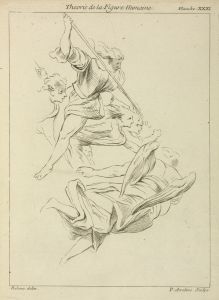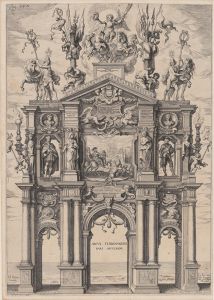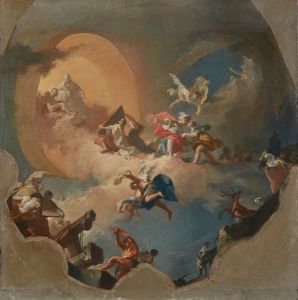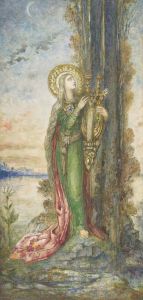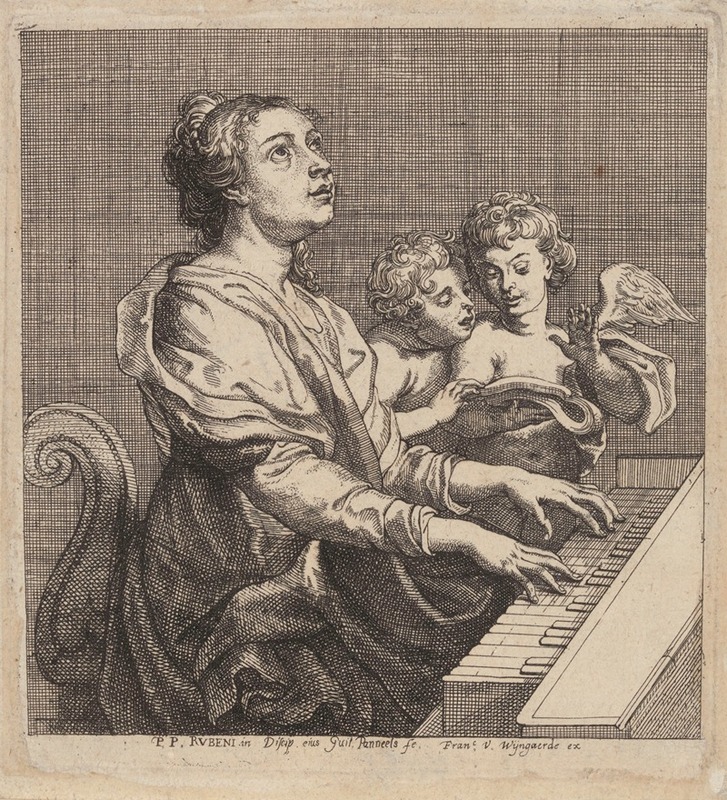
Saint Cecilia
A hand-painted replica of Peter Paul Rubens’s masterpiece Saint Cecilia, meticulously crafted by professional artists to capture the true essence of the original. Each piece is created with museum-quality canvas and rare mineral pigments, carefully painted by experienced artists with delicate brushstrokes and rich, layered colors to perfectly recreate the texture of the original artwork. Unlike machine-printed reproductions, this hand-painted version brings the painting to life, infused with the artist’s emotions and skill in every stroke. Whether for personal collection or home decoration, it instantly elevates the artistic atmosphere of any space.
Saint Cecilia by Peter Paul Rubens is a notable painting that exemplifies the Baroque style for which the artist is renowned. Peter Paul Rubens, a Flemish painter born in 1577, is celebrated for his dynamic compositions, vibrant color palette, and masterful use of light and shadow. His works often depict religious subjects, historical scenes, and mythological themes, reflecting the cultural and artistic milieu of the 17th century.
Saint Cecilia, the subject of this painting, is revered as the patron saint of music and musicians. Her veneration in the Christian tradition is rooted in her association with music, often depicted with musical instruments such as an organ or a harp. This association stems from her legendary ability to sing to God in her heart during her wedding ceremony, as recounted in hagiographies.
Rubens' depiction of Saint Cecilia captures the essence of the Baroque period, characterized by its emphasis on movement, emotion, and grandeur. The painting likely portrays Saint Cecilia in a moment of musical inspiration or divine ecstasy, a common theme in Baroque art that seeks to evoke an emotional response from the viewer. Rubens' use of rich colors and dramatic contrasts of light and shadow enhances the sense of movement and vitality in the composition, drawing the viewer's eye to the central figure of Saint Cecilia.
The painting is believed to have been created during Rubens' mature period, a time when he was at the height of his artistic powers and had established himself as one of the leading painters in Europe. This period of Rubens' career is marked by a synthesis of influences, including the Italian Renaissance and the works of Caravaggio, which informed his distinctive style.
Rubens' Saint Cecilia is part of a broader tradition of depicting this saint in art, a tradition that spans several centuries and includes works by other notable artists such as Raphael and Guido Reni. Each artist brings their own interpretation to the subject, reflecting the cultural and artistic values of their time.
The painting's provenance, or history of ownership, is an important aspect of its historical context. While specific details about the commissioning and early ownership of Rubens' Saint Cecilia may not be well-documented, it is known that many of Rubens' works were commissioned by religious institutions, private patrons, and members of the European nobility. These patrons often sought to express their piety, wealth, and cultural sophistication through the acquisition of religious art.
Rubens' influence on the art world extends beyond his own works; he was a prolific teacher and mentor to a generation of artists who carried forward his techniques and stylistic innovations. His workshop in Antwerp was a hub of artistic activity, producing numerous paintings that contributed to the spread of the Baroque style across Europe.
In summary, Saint Cecilia by Peter Paul Rubens is a testament to the artist's mastery of the Baroque style and his ability to convey religious themes with emotional depth and visual splendor. The painting reflects both the personal devotion of its subject and the broader cultural and artistic currents of the 17th century. Through his depiction of Saint Cecilia, Rubens continues to inspire admiration and scholarly interest, underscoring his enduring legacy in the history of art.













